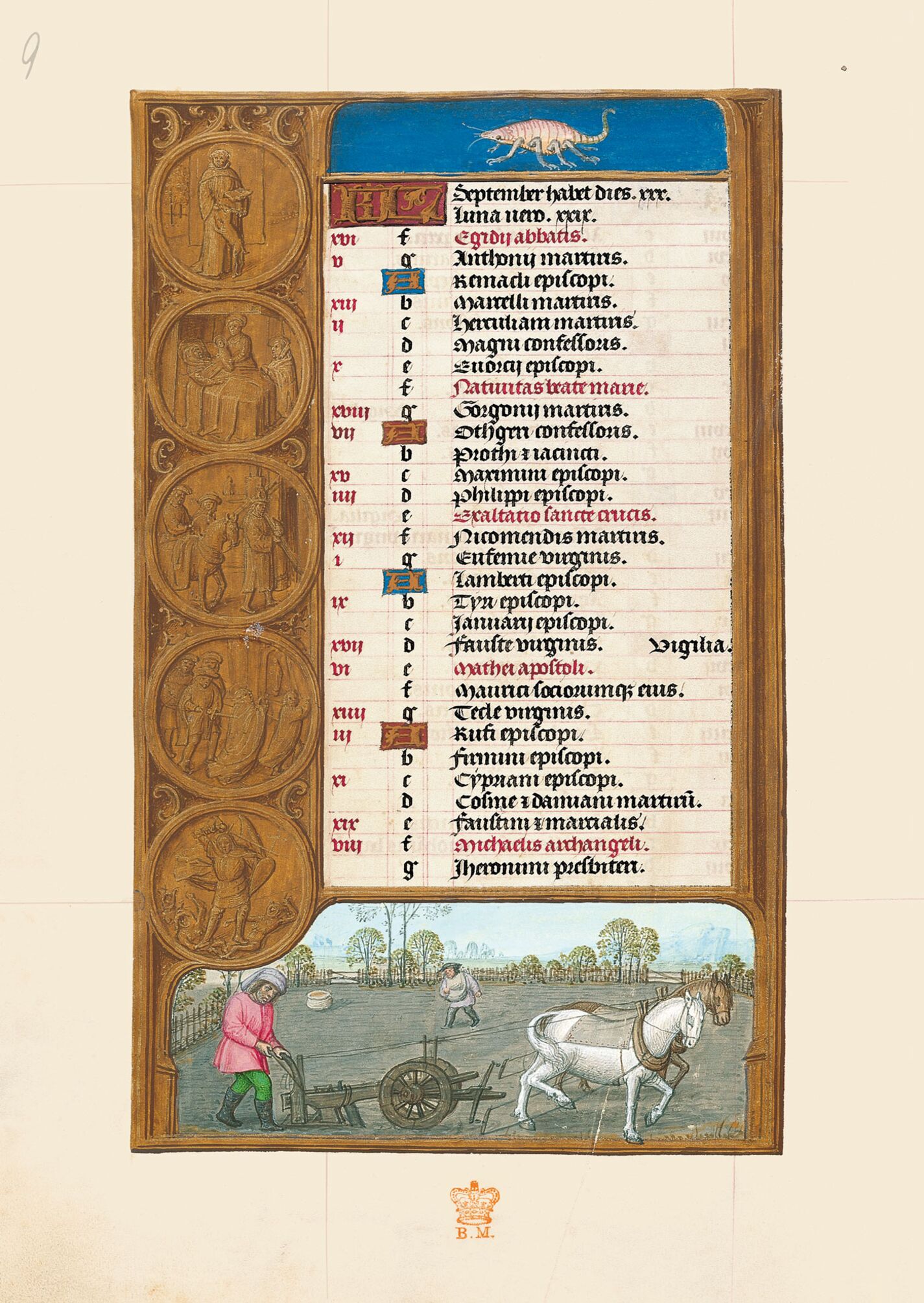Scorpio is not depicted in a very realistic manner, an indication of the painter’s lack of knowledge about this arachnid. Consequently, it is shown as an arthropod with a pointed head and its nippers are not distinguished from the three pairs of legs. Its segmented body and jointed tail ending in a sting held aloft as if about to strike do, however, differentiate it from the sign of Cancer represented as a freshwater crab. This arthropod had, since the Early Middle Ages, acquired negative connotations that affected the scorpion in astrology, in the opinion of the Augustinian Alexander Neckam in De naturis rerum and of Bartholomaeus Anglicus in De Propietates rerum, amongst other authors.
The bottom scene shows the ploughing and sowing of the winter cereal inside a fenced plot. In the background, trees with scant, yellow foliage can be seen. The seed, in a sack on the edge of the field, is then put into the pouch hanging like an apron from the shoulders of a peasant who scatters it along the furrows. Depicted in the foreground is the ploughing, a commonplace theme in the iconography of the seasons in Antiquity on both sarcophagi and mosaics, and which survived in the Middle Ages in a series of items with clearly classical roots. The peasant has a goad in his right hand to spur the horses on whilst his left hand holds the plough handle used to steer the plough. The plough itself is of the heavy, wheeled type first depicted in eleventh-century manuscripts.

Scorpio is not depicted in a very realistic manner, an indication of the painter’s lack of knowledge about this arachnid. Consequently, it is shown as an arthropod with a pointed head and its nippers are not distinguished from the three pairs of legs. Its segmented body and jointed tail ending in a sting held aloft as if about to strike do, however, differentiate it from the sign of Cancer represented as a freshwater crab. This arthropod had, since the Early Middle Ages, acquired negative connotations that affected the scorpion in astrology, in the opinion of the Augustinian Alexander Neckam in De naturis rerum and of Bartholomaeus Anglicus in De Propietates rerum, amongst other authors.
The bottom scene shows the ploughing and sowing of the winter cereal inside a fenced plot. In the background, trees with scant, yellow foliage can be seen. The seed, in a sack on the edge of the field, is then put into the pouch hanging like an apron from the shoulders of a peasant who scatters it along the furrows. Depicted in the foreground is the ploughing, a commonplace theme in the iconography of the seasons in Antiquity on both sarcophagi and mosaics, and which survived in the Middle Ages in a series of items with clearly classical roots. The peasant has a goad in his right hand to spur the horses on whilst his left hand holds the plough handle used to steer the plough. The plough itself is of the heavy, wheeled type first depicted in eleventh-century manuscripts.